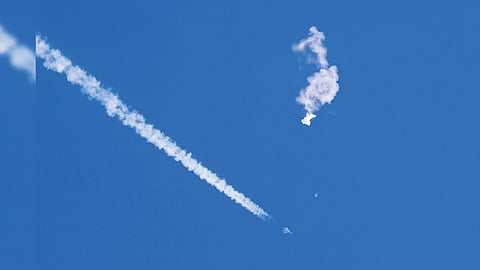

David Axe
China’s spy balloons don’t make a lot of sense. At least not from a military perspective.
A high-altitude balloon doesn’t do much that a small satellite in low-Earth orbit can’t do — and the satellite has the benefit of being practically invisible to the naked eye. It’s not even clear that a spy balloon is more cost-effective than a cluster of small satellites.
But leave aside the military rationale. There are reasons for Chinese military or intelligence agencies to deploy spy balloons that don’t have anything to do with effectiveness, practicality or efficiency. Military decision making doesn’t occur in a vacuum. Especially in a political system as opaque, and undemocratic, as China’s.
It’s entirely possible the balloons are a bad idea that somehow thrived inside the Chinese Communist Party bureaucracy, the same way the US military-industrial-political complex sometimes — some might say often — produces technology that might look great on paper but doesn’t work very well in the real world. Just look at the Navy’s pricey, useless littoral combat ship.
It’s also possible the balloons are working exactly how Chinese planners hoped.
Balloons have been used for surveillance systems since the French deployed them to spy on Austrian and Dutch troops in 1794. Yet the advent of aircraft, then satellites rendered balloons obsolete for most military and intelligence applications. After all, an airplane is more maneuverable. A satellite is so high in the sky that it’s impervious to most countermeasures.
While the US military can still tether static, low-altitude balloons over its frontline outposts, satellites and manned and unmanned spy planes handle most strategic intelligence gathering.
So why did China send free-floating balloons to spy on the US — at least three times during the administration of Donald Trump and, it seems, twice during President Biden’s term?
It wasn’t for a lack of spacecraft. China oversees more than 500 satellites, making it the world’s second-largest space power, after the US with its roughly 3,400 satellites. Chinese satellites criss-cross the US every day, snapping photos, scooping up electronic signals and possibly even looking for the tell-tale infrared bloom resulting from rocket launches on US soil.
The Pentagon knows it’s being watched. Which is why when that 200-foot-tall Chinese spy balloon became big news as it drifted across the US at an altitude of 60,000 feet last week, the military urged calm.
“We did not assess that it presented a significant collection hazard beyond what already exists in actionable technical means from the Chinese,” Gen Glen VanHerck said, two days after the Air Force shot down the balloon off the South Carolina coast. A second device was shot down near Alaska on Friday.
High-altitude balloons might be slightly cheaper than, say, a multimillion-dollar constellation of breadbox-size cubesats, but it’s not clear that the lower cost is worth the obvious visibility and vulnerability of a balloon.
Authoritarian regimes need external enemies in order to cast themselves as their country’s protector. But the same military provocations that describe the foreign threat are also a subtle reminder to the people back home: Stay in line, lest we aim this weaponry at you.
Axe is a staff writer at Forbes and a non-fiction author of several books, most recently, “Drone War: Vietnam”
Visit news.dtnext.in to explore our interactive epaper!
Download the DT Next app for more exciting features!
Click here for iOS
Click here for Android